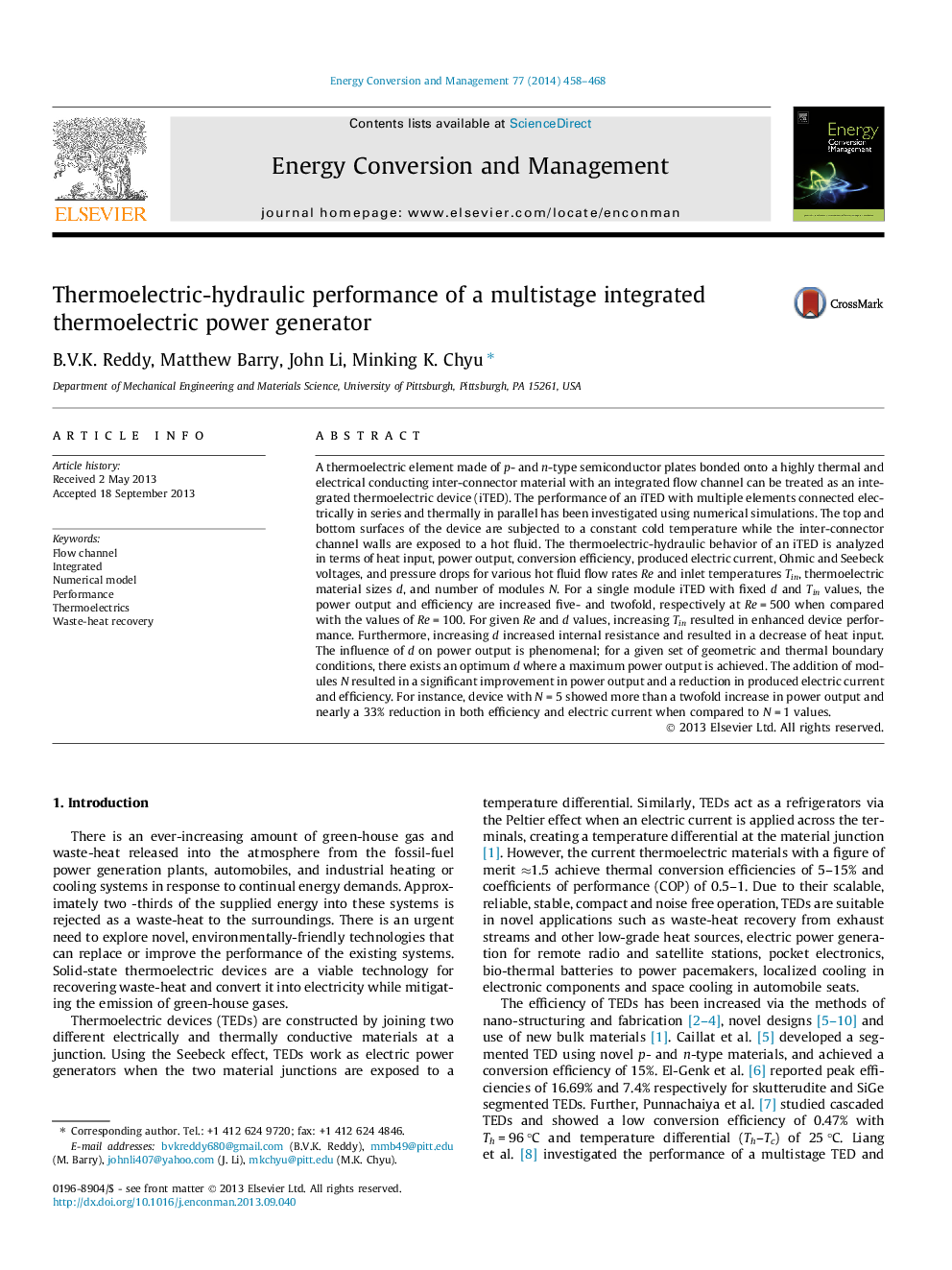| Article ID | Journal | Published Year | Pages | File Type |
|---|---|---|---|---|
| 7165851 | Energy Conversion and Management | 2014 | 11 Pages |
Abstract
A thermoelectric element made of p- and n-type semiconductor plates bonded onto a highly thermal and electrical conducting inter-connector material with an integrated flow channel can be treated as an integrated thermoelectric device (iTED). The performance of an iTED with multiple elements connected electrically in series and thermally in parallel has been investigated using numerical simulations. The top and bottom surfaces of the device are subjected to a constant cold temperature while the inter-connector channel walls are exposed to a hot fluid. The thermoelectric-hydraulic behavior of an iTED is analyzed in terms of heat input, power output, conversion efficiency, produced electric current, Ohmic and Seebeck voltages, and pressure drops for various hot fluid flow rates Re and inlet temperatures Tin, thermoelectric material sizes d, and number of modules N. For a single module iTED with fixed d and Tin values, the power output and efficiency are increased five- and twofold, respectively at Re = 500 when compared with the values of Re = 100. For given Re and d values, increasing Tin resulted in enhanced device performance. Furthermore, increasing d increased internal resistance and resulted in a decrease of heat input. The influence of d on power output is phenomenal; for a given set of geometric and thermal boundary conditions, there exists an optimum d where a maximum power output is achieved. The addition of modules N resulted in a significant improvement in power output and a reduction in produced electric current and efficiency. For instance, device with N = 5 showed more than a twofold increase in power output and nearly a 33% reduction in both efficiency and electric current when compared to N = 1 values.
Related Topics
Physical Sciences and Engineering
Energy
Energy (General)
Authors
B.V.K. Reddy, Matthew Barry, John Li, Minking K. Chyu,
